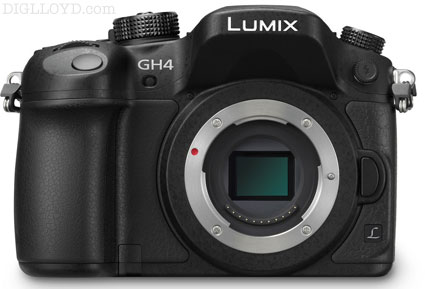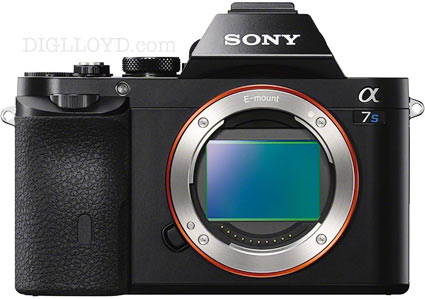Thoughts on Panasonic GH4 and GH4 Video Quality vs Sony A7s (Sensor Size)
Get Panasonic GH4 at B&H Photo.
See the low light video example in the review of the Panasonic GH4.
The Panasonic GH4 is a breakthrough camera, but I wish it had the 5-axis image stabilization of the Olympus E-M1, because nothing else will do at high speed (stabilizer rig and/or extra gear is not an option). Basically, I want 4K in an Olympus E-M1 for that sort of outdoor adventure sort of thing, in a relatively compact camera that is also a still camera (rules out the Go Pro hero).
By the way, assumptions about 2013 Mac Pro video transcoding speed might be ill-advised—test it, do not assume.
Depth of field
Reader James K aptly points out that depth of field on full frame will be about two stops less than on Micro Four Thirds, e.g., the format equivalent depth of field at f/2.8 on a Micro Four Thirds camera like the Panasonic GH4 is f/5.6 on full frame.
Video quality

Just as with still images, higher quality comes from a larger sensor, for signal to noise reasons, e.g., the same field of view on a larger sensor means many more photons collected relative to baseline noise.
With about 5X the real estate of Micro Four Thirds for 3840 X 2160 UltraHD recording (that’s the math), the A7s has a huge quality advantage over the Panasonic GH4 on sensor size alone. I suspect that it will set new standards relative to its price range.
So while I’m really liking the breakthrough detail of 4K video with the Panasonic GH4, what strikes me is just how limited the small sensor it is at dusk (even at f/2), which is a beautiful time of day to shoot (“dusk” here can mean early morning, night, indoors, any low light situation).
Even downsampling the GH4 video at 4K down to 1080p shows visible quality limitations. High quality imagery at night is going demands a sensor with outstanding photon-collecting power. Hence the Sony A7s comes to mind.
My impression is also that the dynamic range of the smaller sensor has its limits under more brightly lit conditions. The Sony A7s with its 14-bit sensor should be able to process that dynamic range into outstanding 8/10/12 bit video output, though the flip side appears to be the requirement for external recording for 4K capture. The GH4 is so very convenient with its in camera recording for more casual use.
What a shame that the Pentax 645z with its 44 X 33mm sensor will support only 1080p video and not 4K 3840/4096 X 2160 across nearly all its 44mm width. In my view, this is a huge mis-step for Pentax given the deep pockets of video users.
David S writes:
I am glad that you are reviewing the GH4. It is the camera that I intend to use to shoot documentary films.
A point that you may want to make in your articles - it is my understanding that when recording 4K to the internal SD card, the GH4 only records luma+chroma in the 4:2:0 sampling format. So, less chroma information than the preferred 4:2:2 sampling format is being recorded when recording 4K to the internal SD card.
I think that that shows in your shots of the orange poppies which have a somewhat artificial plastic-like look to their coloring. In order to record the 4:2:2 sampling format when shooting in 4K, the GH4 interface unit and a capable external recording device need to be used in conjunction with the GH4. That is only the case when shooting in 4K. When shooting in 1080 HD, the GH4 is capable of recording 4:2:2 sampling directly to the internal SD card.
I have ordered my GH4 bundled with the interface unit. I have yet to figure out which external recording device I will use but the Atomos Shogun ($2,000) seems like it could be a good option. So, all in all, the total camera body outlay for real broadcast quality 4K comes to about $5,300 ($3,300 for the GH4+interface unit bundle and $2K for the 3rd party outboard recorder). That’s a significant step up from the $1,700 GH4 body only price but still a great price point for broadcast quality 4K.
DIGLLOYD: from what I read:
Video recorded to SD cards is 4:2:0 8-bit. Real-time 4:2:2 8-bit and 4:2:2 10-bit video can also be sent to an external monitor or recorder with an optional micro HDMI cable.
California poppies are insanely difficult to record on any camera (JPEG impossible due to gamut), or even present in anything but ProPhotoRGB color space (gamut issues). In the sample video, I dialed down the exposure and the detail appears to be there (when opened in Photoshop and checking luminance), so it could be a color thing. I’m unclear on the actual gamut of the recording format or how this is handled in video (I’m a video newbie). But all these agrees with the point: one will want 4:2:2 10-bit recording with “underexposure” for this type of subject matter for proper grading and color results without the loss of these intense colors.
































